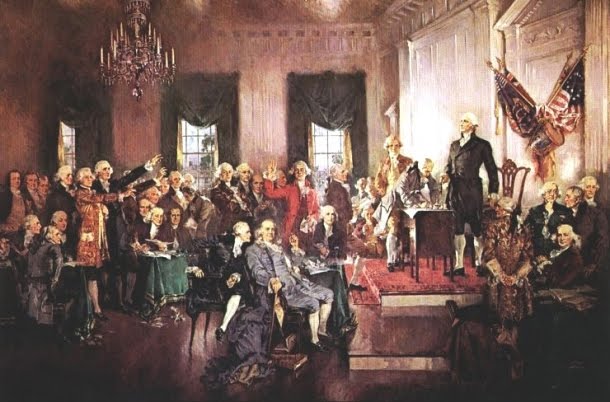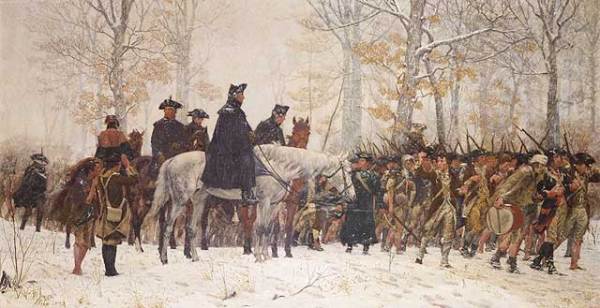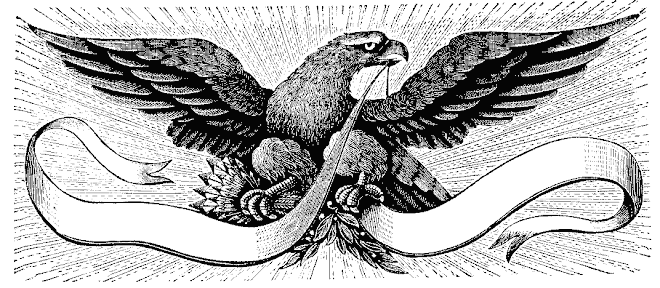From Campaign For Liberty:
Public Schools and Social Conflicts
By Jim Powell
View all 6 articles by Jim Powell
Published 10/21/10
Printer-friendly version
Government is widely perceived as a foundation of social order, yet it is the single greatest source of disorder. Political power constantly tempts those who control it to enforce conformity with their religion, education, lifestyle, or other preferences. Naturally, other people tend to have their own preferences. They don't want anybody else telling them what to do. They evade the enforcers if they can, and if necessary they fight back. This is a major reason there have been so many social conflicts, wars, and revolutions throughout history.
Of all governmental institutions in modern times, perhaps none has caused more conflicts than public schools. During the 1840s, following the failure of the potato crop and mass starvation in Ireland, Protestants became alarmed at the influx of a million Irish Catholics. Horace Mann, secretary of the Massachusetts Board of Education, insisted that public schools should teach Protestant values. In his 1848 report to the Massachusetts School Board, he acknowledged the emerging conflicts: "Let it be once understood, that the schoolroom is a legitimate theatre for party politics, and with what violence will hostile partisans struggle to gain possession of the stage."
Mann concluded it wasn't enough for the government to control schools. Children must be forced to attend them, because, he claimed, compulsory schooling could help make better citizens and eliminate poverty and crime. He helped secure passage of America's first compulsory school-attendance law in 1852. School attendance became compulsory for children between 6 and 16.
Later, millions more immigrants, primarily Catholic, came to America from southern Europe. Protestants were determined to "Americanize" them. Catholics resented having to pay taxes for Protestant schools, and they established their own system of independent, "parochial" schools. (It's still the case that everybody, including Catholics, who doesn't enroll children in public schools must pay public-school taxes.) The Ku Klux Klan, among others, tried to suppress Catholic schools and affirm Protestant supremacy in public schools.
Many public-school advocates wanted to prohibit people from sending their children anywhere but to a public school. In 1922, Oregon enacted a law requiring compulsory attendance at public schools. Two independent schools, Hill Military Academy and the Society of the Sisters of the Holy Names of Jesus and Mary, filed lawsuits challenging the law. Their cases reached the U.S. Supreme Court in 1925. Justice James McReynolds wrote the majority opinion that the law should be overturned. He explained that the 1922 law "unreasonably interferes with the liberty of parents and guardians to direct the upbringing and education of children."
Design versus evolution
Meanwhile, public schools intensified conflicts about religion. One of the most famous trials of the past century was about whether public schools should teach the Biblical story of how the world was created. On March 15, 1925, Tennessee passed the Butler Act, making it illegal for any public school or any other educational institution receiving government funding to teach a theory that denies the Biblical story. The law was aimed at the theory of evolution, developed by the English naturalist Charles Darwin and others. The 24-year-old substitute teacher and football coach John T. Scopes was charged with violating the law. In this, the "Monkey Trial," Scopes was found guilty and fined $100. The Monkey Trial was big news everywhere. It was covered by more than a hundred reporters, including reporters from London.
After the trial, more than 40 bills similar to the Butler Act were introduced in state legislatures across the United States. The controversy persisted for decades, and it wasn't until 1968 that the U.S. Supreme Court ruled on a state law that made it illegal for public-school teachers to teach "that mankind ascended or descended from a lower order of animals." The justices overturned an Arkansas law because it had been enacted for religious reasons and therefore violated the Fourteenth Amendment to the U.S. Constitution.
During the 1990s, there were further attempts to attack the teaching of evolution in public schools. The new strategy, promoted by the Seattle-based Discovery Institute, was to require that public schools inform students about alternatives to evolution, namely "intelligent design" -- a view that "certain features of the universe and of living things are best explained by an intelligent cause" (presumably God).
In August 1999, a majority of the 10-member Kansas board of education decided to eliminate evolution and the Big Bang theory from the list of subjects covered by public-school standardized tests. Teachers might still teach the subjects, but that wouldn't help improve test scores -- an effective inducement to spend time on subjects that would make a difference. As Harvard paleontologist Stephen Jay Gould remarked, the policy was like teaching "chemistry without the periodic table, or American history without Lincoln." After a six-year struggle, pro-evolution forces gained control of the board. The Washington Post called the ongoing debate "the highest-profile confrontation over evolutionary theory in years."
In Pennsylvania, October 2004, the Dover Area School Board became the first public-school board to adopt an intelligent-design policy: public-school biology teachers had to cover "intelligent design" and say that evolution was a theory, not a fact. The policy ignited quite a bit of controversy, and in November 2005 Dover school-board members who had backed the policy were voted out. The following month, federal district judge John Jones ruled that the Dover school board's policy was unconstitutional.
Many other public-school battles have involved religion. Catholics objected to using the King James Bible in public schools. Jews objected to any Christian observances in public schools. Atheists and others objected to any religious observance in public schools. Many parents protested that religious students should be able to have a moment of silent prayer in a public school.
While there will always be disagreements about religion, probably the school-related religious battles would have faded away if parents had been free to pay for schools of their choice and children had been free to attend them -- instead of being taxed for schools whose policies they opposed. In Western Europe, centuries of religious wars gave way to peace when people became weary of all the slaughter that resulted from efforts to suppress one religion or another.
Racial conflict
Public schools have intensified racial conflicts as well as religious conflicts. In the pre-Civil War South, teaching blacks how to read and write was a crime, because it was believed that educated people would be harder to keep down. Later, when public schools were established, the states enforced racial segregation.
Until the 1960s, Southern states taxed everybody to pay for public schools, school boards controlled the money, and almost all the revenue was spent on white schools. Black schools got little or nothing. They were built thanks to the enterprise of blacks and the voluntary charity of whites. In the North, blacks fared better, but not always very much better.
The U.S. Supreme Court, in the 1954 Brown v. Board of Education decision, struck down provisions in state constitutions that mandated racial segregation in schools. Some states, such as Kansas, had laws permitting school boards to segregate public schools, and those laws, too, were struck down. All this was well and good. There shouldn't have been laws mandating racial segregation. If something is paid for by all taxpayers, it should be open to all taxpayers.
But rather than establish a separation of schooling and state, like the separation of church and state, the Supreme Court continued to support government interference with education. It mandated compulsory integration.
Compulsory integration seemed like a shortcut to racial harmony and justice, but it was probably the long way around. Consider a thought experiment. Imagine how history might have turned out differently if Southern laws interfering with schooling had been abolished, and the federal government had protected the right of families to pay only for the schools of his choice. All schools would have been independent, without taxpayer support. Such schools would have conducted fundraising campaigns for a variety of purposes including scholarships, as independent schools have always done. Segregationists would have paid tuition at segregated schools and would have had no right to interfere in any way with families who preferred integrated schools. Nobody would have been forced to pay for or send their children to schools he didn't like, which would have reduced provocations for racial conflict.
If there had been an entirely independent school system, as we have an independent "church system" and independent systems for handling the bulk of activities in a free society, perhaps most families would have chosen segregated schools for quite a while. But it's also true most parents have continued to choose segregated schools despite massive efforts in recent decades to force integration. That doesn't mean decisions have always been made because of race. If available integrated schools had provided good educational environments, focused on teaching important skills, free from drugs and violence, probably a large number of parents would have made different choices.
Voluntarily integrated schools had crucial advantages precisely because people wanted to be there. They would have been more highly motivated to succeed than parents and children conscripted for schools they didn't like. The success of voluntarily integrated schools would have done more than just about anything else to undermine racial stereotypes and attract more families. Even if voluntarily integrated schools started with small enrollments, they would have established a foundation for harmonious race relations.
The idea of an entirely independent school system might seem outrageous to some people, since it would have meant letting segregationists continue to do the wrong thing (segregating). But one must keep in mind that a majority of Southerners were segregationists. They had bitter memories of being humiliated during and after the Civil War. Many were eager to avenge their considerable losses, as the Ku Klux Klan made clear. Moreover, while large numbers of Northerners opposed slavery, they didn't necessarily want to live near a free black population. Since the United States was a democracy, a public-school system would be controlled by a majority hostile to blacks. The majority was going to pursue its own interest, probably by using its taxing power to the disadvantage of the black minority. When a minority faces a hostile majority, it is foolish for the minority to expect any favors. The most prudent policy aim would be freedom from interference by the hostile majority. Laissez faire!
Busing
As things turned out, compulsory integration provoked stubborn resistance throughout the South. In Green v. County School Board (1968), a Virginia case, U.S. Supreme Court Justice William Brennan expressed the Court's impatience. He declared, "Freedom of choice is not an end in itself." In Swann v. Charlotte-Mecklenburg Board of Education (1971), a North Carolina case, the justices approved racial quotas "as a starting point in shaping a remedy." They found themselves struggling with a morass of arbitrary standards for acceptable integration. Chief Justice Warren Burger referred, for example, to "an initial ratio for the whole system of at least two Negro teachers out of each 12 in any given school." The Swann decision set the stage for forced busing aimed at integrating public schools.
Forced busing exploded as an issue when it began to be enforced in Northern cities. "Both supporters and opponents escalated their rhetoric," reported journalist Tamar Jacoby,
with liberals excoriating the ‘racism' of northern ethnics, conservatives denouncing the "Marie Antoinette liberalism" of judges who made grand moral gestures that had to be paid for by working-class families. Newspapers and magazines were filled with stories about the violence erupting in cities where court orders were in the offing: the Chicago kids being rolled for lunch money, the Annapolis students afraid to use the cafeteria, the heroin being sold openly just a block from a Detroit school. Anti-black graffiti, self-segregation on buses, handguns circulating in ghetto playgrounds -- there was something to frighten everyone, and within a few weeks everyone was frightened. By mid-November [1971], Congress was obsessed with busing, and a Gallup poll showed 76 percent of voters were against it.
A Gary, Indiana, group of black nationalists issued a statement saying, "We condemn racial integration of schools. [Busing is] a bankrupt and suicidal method ... based on the false notion that black children are unable to learn unless they are in the same setting as white children."
On June 21, 1974, W. Arthur Garrity Jr., judge on the U.S. District Court, District of Massachusetts, ruled in the case of Tallulah Morgan v. James Hennigan. It was a class action suit brought by the National Association for the Advancement of Colored People, to seek enforcement of the Racial Imbalance Act, a law the Massachusetts state legislature had passed in 1965 to outlaw schools with more than 50 percent of students from minority groups (in other words, all-black public schools). Garrity ordered that forced busing be used to integrate Boston public schools.
Soon buses were rolling to take Irish kids from South Boston into the Roxbury black ghetto and children from Roxbury into South Boston. A group of Irish parents, calling themselves ROAR (Restore Our Alienated Rights) called for a boycott of Boston public schools. Irish mothers took to the streets, protesting against forced busing. Some 400 Irish mothers with rosaries marched into a police line, reciting the Hail Mary. Women lay down in front of delivery trucks for the Boston Globe, a newspaper that advocated forced busing. The Boston Police Union asserted they weren't obliged to arrest protesters, and Boston mayor Kevin White asked for help from state police and the National Guard. White remarked that about 80 percent of the people seemed to be against forced busing. For three years, as many as 300 police officers a day were reported to be patrolling South Boston High School. White parents were outraged that their children were pawns in a numbers game.
On June 25, 1974, while Boston was aboil, the Supreme Court issued a key ruling. In Milliken v. Bradley, a district court ordered Detroit's school board to acquire 295 buses for busing white children from 53 suburbs to Detroit schools. But there wasn't any evidence that people in the suburbs were to blame for public-school segregation in Detroit. Many suburban residents had fled Detroit's high taxes and violent crime, but they didn't have any control over or responsibility for Detroit's public schools. Government officials were responsible for the public schools. The Supreme Court ruled that if districts (in this case, Detroit's suburbs) had no responsibility for segregation, they couldn't be ordered to participate in forced busing.
In September 1985, Garrity turned Boston public schools over to the Massachusetts Board of Education. During 11 years of forced busing, public-school enrollment plunged from 93,000 to 57,000. The percentage of white students plunged from 65 percent to 28 percent.
Test scores were dismal in Boston's public schools, so forced busing didn't seem to help anybody. Nonetheless, it persisted. By the 1990s, Boston public schools were even more segregated than before. On July 14, 1999, the Boston School Committee announced it would no longer use race as a criterion to determine where school children would be bused. Apparently the committee felt the pressure of a federal lawsuit that argued forced busing discriminated against white children. Its long, dismal social experiment seemed to be over.
Teaching methods
Other public-school battles, however, raged on. There have been "reading wars" and "math wars," as parents, teachers, and education professors argued about what and how public school systems should teach. Educational theorists promoted the look-say method of reading, while parents insisted that it didn't work and that public schools should rely on phonics. Similarly, education theorists tried to interest students in mathematics by teaching several different methods of performing basic operations, but that approach left many students confused, and parents demanded that schools return to traditional methods with the fewest number of steps, the fewest chances of error, and the fastest answers. Education theorists relentlessly downgraded the importance of mathematics, encouraged students to estimate answers rather than seek precise solutions, de-emphasized long division, discouraged teaching students how to perform operations involving more than two digits, and cut back the teaching of algebra, geometry, trigonometry, and calculus. There have been protests across the country.
Public-school teachers have inflated grades and promoted kids who were unprepared for the next level of work. Parents complained that despite skyrocketing taxes and gold-plated teacher-union settlements, public-school graduates often lacked essential skills. Parents demanded more accountability, but schools responded by "teaching the test" and administering tests again and again until enough bored kids finally passed.
Surely it's past time to think outside of the public-school box.
Copyright © 2010 Future of Freedom Foundation
A READER ON THE STATE OF THE POLITICAL DECAY AND IDEOLOGICAL GRIDLOCK BETWEEN ONE GROUP WHO SEEK TO DESTROY THE COUNTRY, AND THOSE WHO WANT TO RESTORE IT.
The Rise and Fall of Hope and Change




Alexis de Toqueville
The American Republic will endure until the day Congress discovers that it can bribe the public with the public's money.
Alexis de Tocqueville
Alexis de Tocqueville
The United States Capitol Building

The Constitutional Convention

The Continental Congress

George Washington at Valley Forge



No comments:
Post a Comment